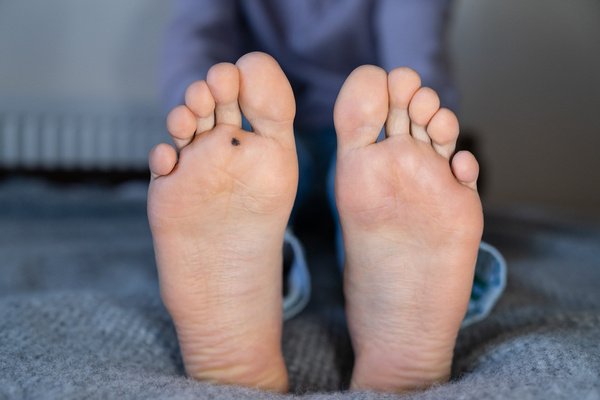Plantar warts are a common condition that appears on the soles of the feet. They are caused by certain strains of the human papillomavirus (HPV) and can make standing or walking uncomfortable due to their hard, rough texture. While traditional medical treatments are effective, many people look to natural and at-home remedies for milder, less invasive ways to address the issue. Here’s information on how plantar warts occur and the different treatments for them:
How Plantar Warts Occur
Plantar warts develop when HPV enters the skin through small cuts, scrapes, or other weak points. The virus thrives in warm, moist environments, making places like locker rooms and public pools common hotspots for transmission. Once the virus is present, it triggers an abnormal growth of skin cells, resulting in the distinctive wart structure you can see.
Plantar warts are contagious and can spread through direct contact with an infected person or contaminated surfaces. It’s worth contemplating foot hygiene and wearing protective footwear in public spaces as fundamental preventative measures. These warts may also spread from one area of your body to another through scratching or touching.
How Medical Treatments Help
Medical treatments often provide fast and reliable results. Three commonly used treatments for plantar warts are:
- Cryotherapy: Cryotherapy involves using liquid nitrogen to freeze the wart. The freezing process destroys the HPV-infected cells, allowing healthy tissue to regenerate. This treatment may require multiple sessions, especially for larger warts.
- Laser Therapy: A more advanced option, laser therapy uses focused beams of light to target and destroy wart tissue. Pulsed dye lasers are highly effective for larger or resistant warts, but the procedure can be costly.
- Salicylic Acid: Salicylic acid is a well-known over-the-counter treatment for warts. Applied directly to the wart, this acid exfoliates thickened skin layers and stimulates your immune system to attack the infected area.
How At-Home Treatments Help
For those seeking alternatives, at-home remedies can help manage and even remove plantar warts over time. Keep in mind that results may vary based on the size and severity of the wart. These at-home methods work by breaking down the thick skin layers that characterize a plantar wart or by creating conditions that discourage the virus from thriving.
Duct Tape
A surprising but well-documented option, duct tape can be used to cover the wart entirely. The tape helps to soften the layers of skin over time, making it easier to exfoliate the wart. Replace the tape every few days and repeat the process for several weeks.
Apple Cider Vinegar
Apple cider vinegar offers dual benefits, thanks to acetic acid’s antibacterial properties and malic acid’s exfoliation effects. Apply it directly to the wart with a cotton swab at least twice daily. After several weeks of consistent use, the wart should soften, making removal possible with an exfoliating tool. Natural treatments like these are easily accessible and often inexpensive, though they may require more patience than medical interventions.
Salicylic Acid
Salicylic acid is also available for home use in various strengths ranging from 20% to 40%. Consistent daily application helps break down the tough layers of skin surrounding the wart. Combine this with warm water soaks and exfoliation for the best results.
Learn More Treatment Methods for Plantar Warts
If plantar warts are negatively affecting your quality of life, it’s worth exploring the treatment options mentioned above. While medical treatments bring immediate results for many, natural and at-home methods empower you to take consistent action in the comfort of your home. Keep in mind that persistence and proper application are fundamental when trialing these methods. Should your plantar wart prove stubborn or painful, it may be time to consult a dermatologist to explore professional treatment options. Contact a specialist today to access additional resources tailored to your needs.









